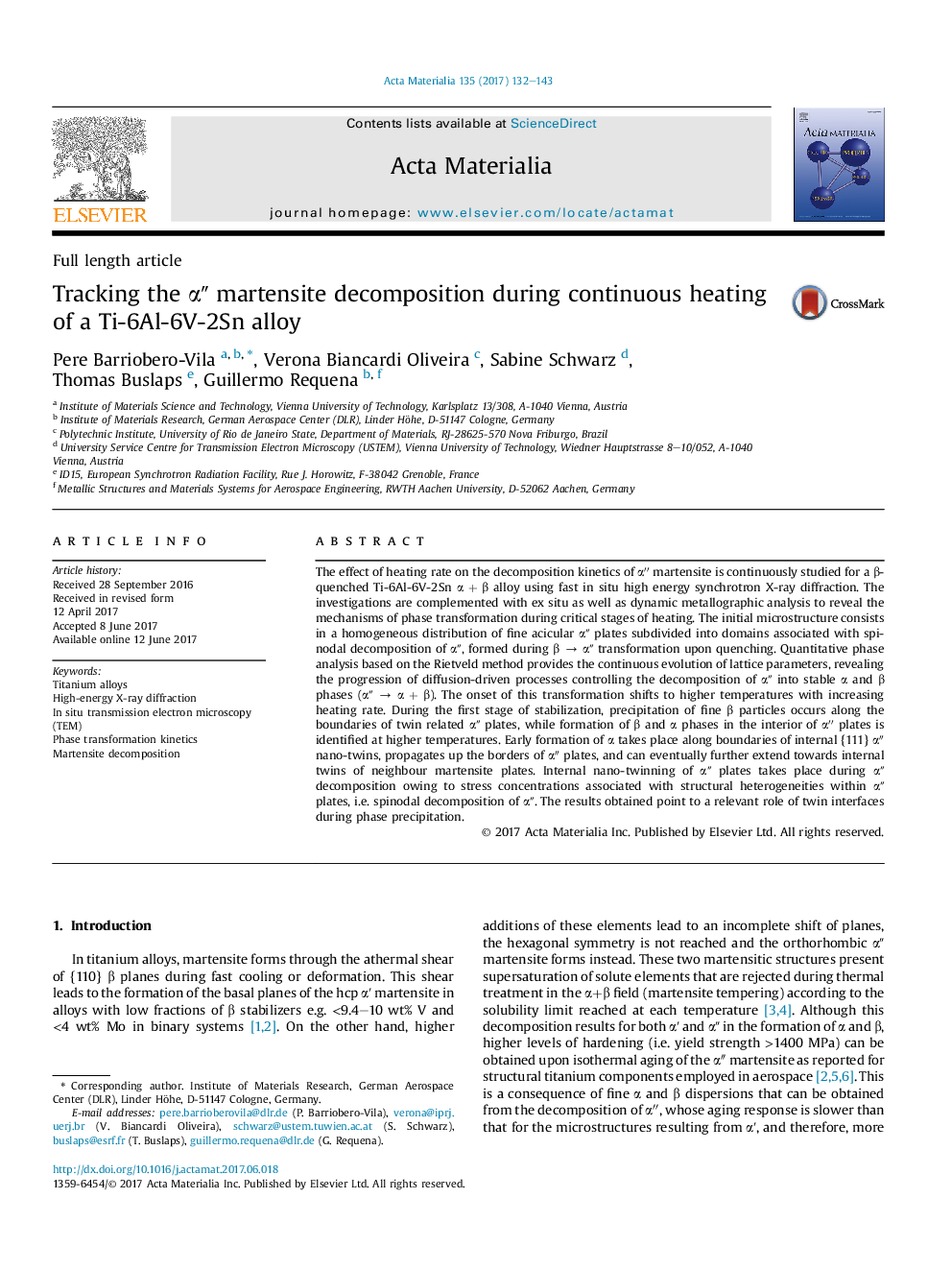| Article ID | Journal | Published Year | Pages | File Type |
|---|---|---|---|---|
| 5435902 | Acta Materialia | 2017 | 12 Pages |
The effect of heating rate on the decomposition kinetics of αⳠmartensite is continuously studied for a β-quenched Ti-6Al-6V-2Sn α + β alloy using fast in situ high energy synchrotron X-ray diffraction. The investigations are complemented with ex situ as well as dynamic metallographic analysis to reveal the mechanisms of phase transformation during critical stages of heating. The initial microstructure consists in a homogeneous distribution of fine acicular αʺ plates subdivided into domains associated with spinodal decomposition of αʺ, formed during β â αʺ transformation upon quenching. Quantitative phase analysis based on the Rietveld method provides the continuous evolution of lattice parameters, revealing the progression of diffusion-driven processes controlling the decomposition of αʺ into stable α and β phases (αʺ â α + β). The onset of this transformation shifts to higher temperatures with increasing heating rate. During the first stage of stabilization, precipitation of fine β particles occurs along the boundaries of twin related αʺ plates, while formation of β and α phases in the interior of αⳠplates is identified at higher temperatures. Early formation of α takes place along boundaries of internal {111} αⳠnano-twins, propagates up the borders of αⳠplates, and can eventually further extend towards internal twins of neighbour martensite plates. Internal nano-twinning of αʺ plates takes place during αʺ decomposition owing to stress concentrations associated with structural heterogeneities within αʺ plates, i.e. spinodal decomposition of αʺ. The results obtained point to a relevant role of twin interfaces during phase precipitation.
Graphical abstractDownload high-res image (256KB)Download full-size image
